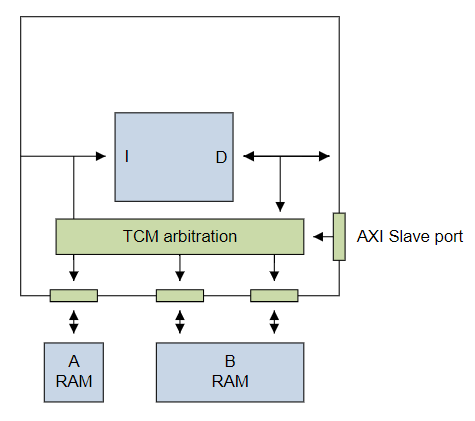SPRAD27A July 2022 – August 2022 AM2431 , AM2432 , AM2434 , AM2631 , AM2631-Q1 , AM2632 , AM2632-Q1 , AM2634 , AM2634-Q1 , AM2732 , AM2732-Q1 , AM6411 , AM6412 , AM6421 , AM6422 , AM6441 , AM6442
4.3 Memory Placement
The purpose of the Tightly-Coupled Memory (TCM) is to provide low-latency memory that the processor can use without the unpredictability that is a feature of caches. The main use of TCM is to store performance critical data and code. Interrupt handlers, data for real-time tasks and OS control structures are a common example. There are two external TCMs that can be configured to only store instructions, only data, or a mixture of the two (TCMA and TCMB). In our library, the polynomial coefficients were placed in TCMB, and the functions themselves in TCMA.
 Figure 4-3 Memory Placement
Figure 4-3 Memory PlacementEnabling a TCM to include both instructions and data provides more flexibility from a system perspective, but might limit performance compared with optimizing a TCM to solely store instructions or data. The TCMB is accessible via two ports. This indicates that the TCM has been implemented as two separate banks of RAM so that the two banks can be accessed simultaneously.